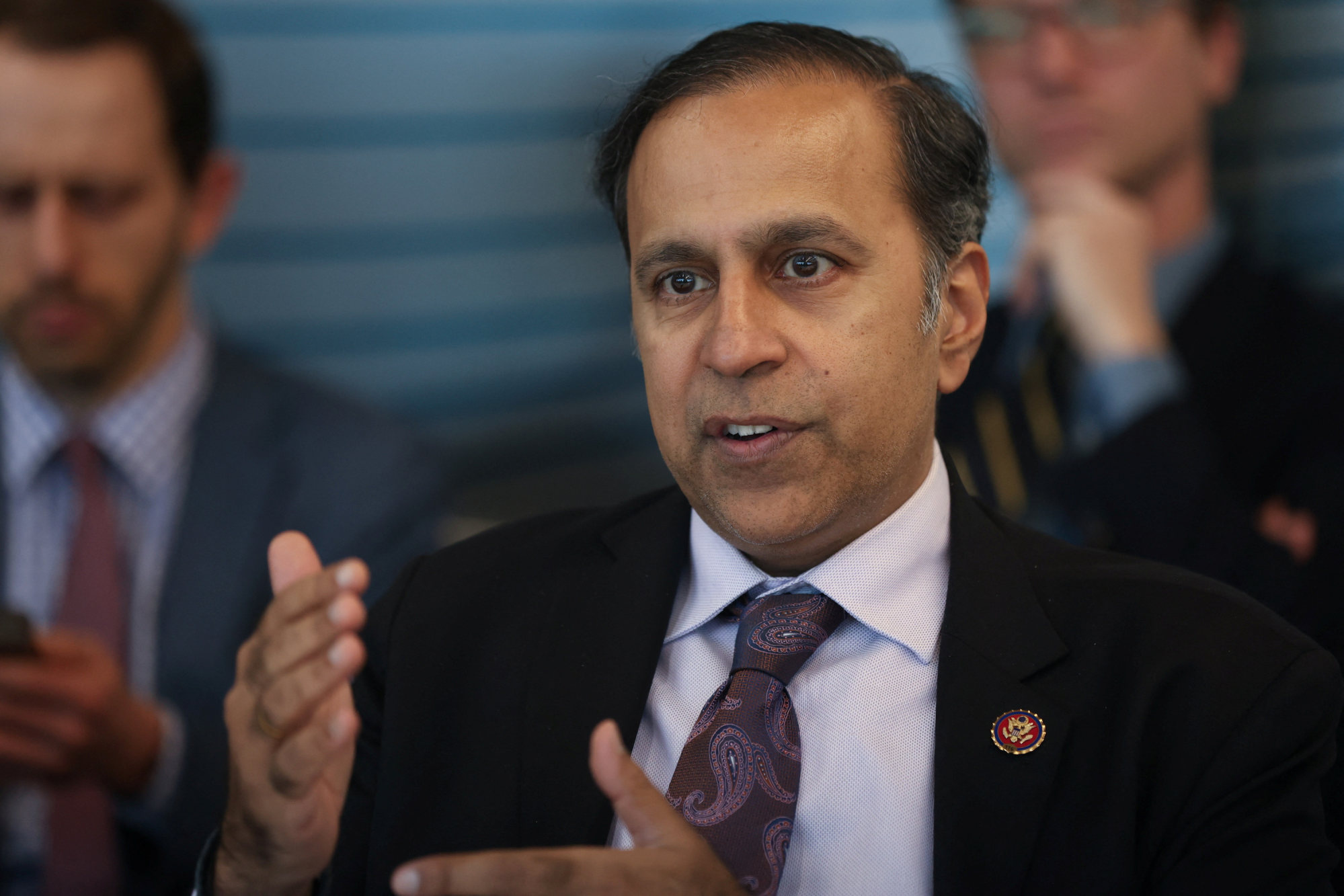A Hong Kong-controlled company managing ports in the Panama Canal was put in the spotlight on Thursday during a US congressional hearing about China’s global development strategy.
Hutchison Ports PPC, a subsidiary of Hong Kong-based CK Hutchison Holdings, was evoked by Representative Raja Krishnamoorthi, a Democrat from Illinois, who asked a witness about the risks associated with the Panamanian government allowing Chinese companies to manage ports on the strategic canal.
Krishnamoorthi, the ranking member of the House select committee on China, did not name Hutchison explicitly, but noted that the company’s ties to Beijing might lead to delays in American civilian and military shipping in the event of a conflict with Taiwan. He also drew attention to how Chinese-backed ports could be used as military bases to further Beijing’s objectives.
Do you have questions about the biggest topics and trends from around the world? Get the answers with SCMP Knowledge, our new platform of curated content with explainers, FAQs, analyses and infographics brought to you by our award-winning team.
Since 1997, Hutchison has operated two ports on both sides of the Panama Canal, one of the world’s most important trade routes. Even back then, US lawmakers had warned about Beijing’s potential encroachment, but the Pentagon concluded that the ports did not constitute a direct national security threat.
But in 2021, concerns about Chinese influence returned to the forefront when Panama announced that it would renew the company’s contract after it was set to expire in 2022.
Daniel Runde, a senior vice-president at the Centre for Strategic and International Studies, a Washington-based think tank, called for US action to get Beijing out of the canal.
“In an ideal world we would ultimately see that when those contracts end, which will be over the next 10 or 15 years, a chance to get those Hong Kong-controlled companies out of managing those ports,” he told the House select committee on China.
The strategic value of ports has become a focal point in Washington in its competition with Beijing. In February, US President Joe Biden signed an executive order pushing maritime vessels and ports to shore up cybersecurity after US officials raised alarms that Beijing could remotely operate Chinese-manufactured cranes to disrupt the flow of goods.
‘We must address this issue’: Panama Canal traffic cut by 36% due to drought
Thursday’s hearing featured three witnesses who spoke about the need for Washington to come up with a better alternative to China’s Belt and Road Initiative (BRI).
Bradley Parks, executive director of AidData, a university research lab at William & Mary in Virginia, said the US and its allies had “underestimated the ambition of China’s effort to overhaul Belt and Road”.
The initiative, which began in 2013 as one of Chinese President Xi Jinping’s signature foreign policy plans, has been criticised for violating environmental and transparency standards and saddling countries with loans they cannot afford.

But according to Parks, many of the criticisms and assessments are outdated as Beijing is learning from its mistakes. Washington and its allies are “focused on competing with a version of the BRI that no longer exists,” he said.
To counter China’s BRI and provide a financially sustainable alternative to Beijing-funded projects, the US government established the US International Development Finance Corporation (DFC) in 2018. Since then, it has also launched other infrastructure initiatives including the Partnership for Global Infrastructure and Investment (PGII), a $US 600 billion global development plan with Group of Seven nations.
Witnesses spoke on Thursday about much-needed reforms to the DFC, noting that it still lags behind Beijing in dollar investments.
AidData found that in 2021, China’s aid and credit commitments to low- and middle-income countries were around US$80 billion, while Washington’s development finance stood at about US$60 billion.
Runde recommended expanding the DFC’s scope, such as by making it easier to fund middle- and upper-middle-income countries during the next congressional authorisation of the body. The DFC “should be able to operate in places like Panama ...[and] Mexico more easily,” he said.
David Trulio, president of the Washington-based Ronald Reagan Presidential Foundation and Institute, called for greater incentives to stop institutional silos within the US government, noting that companies seeking to invest in developing countries want a “one-stop shop” to address their needs.
Most US businesses “are frustrated when it comes to figuring out how to draw on the considerable US government resources that taxpayers are already funding,” he said.
More from South China Morning Post:
- How two British ports owned by Hong Kong’s CK Hutchison will help UK pivot to Asia after Brexit
- China-US relations: American funding tool struggles to compete with belt and road, particularly in Latin America: DFC chief
For the latest news from the South China Morning Post download our mobile app. Copyright 2024.





